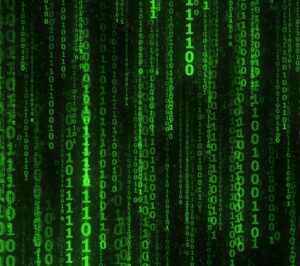1. Consciousness (created knowledge, conscious being) is a set of information systematized by the subject, which is thought over and interpreted by him as a result of the cognitive process, “colored” by his emotions, and refracted through his attitude to himself and to the objects of the Universe. In essence, it represents the whole volume of information created by the subject, i.e. his knowledge and life experience, which are formed by him during the life cycle of the creature’s flesh.
2. The content of consciousness represents the entirety of the subject’s realized being, i.e., all of his knowledge and life experience that:
- are created by the subject during the life cycle of his flesh;
- “colored” by his emotions and experiences;
- refracted through his relations to himself and to the objects of the Universe.
3. The contents of the consciousnesses of different subjects differ from each other:
- alphabets on the basis of which they are created;
- the volume of content;
- energy of both content elements and the general energy of consciousness as a whole.
4. The content of consciousnesses of automatic devices is an information object, which consists of a set of information systematized by the device. Automata are devices that perform any actions stipulated by their creators in advance. As an example – systematization of certain information as an exclusive type of activity: a temperature recorder at a weather station; Google search engine indexing system that collects information from the web and systematizes it; etc.
5. The content of consciousnesses of highly developed beings is energy-informational entities, because in the process of cognition they color all their thoughts with their emotions, which leads to the fact that any element of the content of consciousness is an information-energy formation: a set of information elements (information realized by the subject), each of which has an individual energy (subject’s emotion, subject’s thought energy, subject’s experience energy).
6. At the moment of creation or birth of a new flesh, the volume of consciousness of the object created on its basis is close to zero, but it is constantly increasing, reaching its maximum at the moment of death of the flesh.
7. The volume (magnitude) of consciousness is a parameter of consciousness that can be quantified.
8. The measurement of consciousnesses is nothing but the measurement of their content, i.e. the measurement of the content of consciousnesses. Accordingly, consciousnesses should be measured in the appropriate units of measurement of the content of consciousness, which is peculiar to the corresponding being or population of beings. Since beings can have anything as elements of their alphabets: pictorial signs, sounds, colors, smells, images, as well as any other objects that are available for their perception, the “volumes” of the content of corresponding consciousnesses should be measured in corresponding units of elements of their alphabets, which are peculiar to each kind of beings.
9. The term memory is used for the purposes of describing the process of a Being’s reference to its consciousness. Memory is a conventional name for the set of elements of consciousness that can be manifested by a subject when addressing its consciousness.
10. Each person is an individual possessing individuality, i.e. a unique Body and a unique Personality as one of the manifested aspects of the Soul. It is impossible to clearly identify a person based solely on the parameters of his/her body. People identify each other based on the totality of two interrelated components – the Body and the knowledge and life experience of a person, i.e., in essence, the content of his/her consciousness. When people claim to know the person, it means that, –
- They know what the person’s body looks like;
- They know what the consciousness, i.e., the knowledge and life experience of that person, which they associate with that particular body, “looks like.”
11. If the body or consciousness is altered for any reason, then the people around them may not recognize that person. This can happen if:
- The person’s body is changed. For example: plastic surgery has been done, serious facial injuries have occurred, a lot of time has passed and the person’s body has aged, etc.;
- A person’s consciousness has changed. For example: new knowledge, abilities, skills have appeared or disappeared (a person began to speak foreign languages unknown to him before; began to play well on musical instruments he had not played before, or, on the contrary, “forgot” much of what he knew and knew well before), a person has radically changed his attitude to something or someone, his character or temperament has radically changed.
It is in such cases that people say about such a person – “I do not recognize this person”.
Conclusions:
1. Every creature leaves its mark in the Universe and man is no exception. One part of man’s heritage, which has a material basis, goes to planet Earth (built houses, planted trees, educated children, written books, created devices, corpse of a dead body, etc.), and the other part of man’s heritage in the form of his consciousness goes to Nature. I.e. the consciousness of any being does not disappear with the death of the flesh (the end of the life cycle of the flesh), but continues to reside in the Universe as part of the Soul in the form of an energy-informational object.
2. The content of consciousness is a record based on a code consisting of a specific standardized set of objects (alphabets, words, sentences, etc.), which is created by a population of beings of the same species and is available for perception by these beings.
3. The content of consciousness can be created exclusively during the life cycle of flesh.
4. Alphabet – a standardized set of objects, which is created by a population of beings of one species and is available for perception by these beings, allowing them to create their own languages for communication on this basis:
- In human beings, the elements of alphabets are pictorial signs – letters, numbers, notes…;
- In other beings living on planet Earth, the elements of their alphabets are also sounds, colors, smells, and any other objects available to these Beings for perception. Recall how whales, dolphins, bats, dogs, wolves, etc. communicate… Right, with sounds and odors….
- Entities can have (hypothetically) anything as elements of their alphabets…
5. Word – the basic structural unit of the subject’s language, which serves for naming objects, processes or phenomena in the process of cognition of the Universe, is an arbitrary sequence consisting of the elements included in the alphabet.
6. Proposition– a word or an ordered compound of words organized by a subject.
7. Language – a system that allows correlating the subject’s concepts and properties of objects and processes cognized by him.


